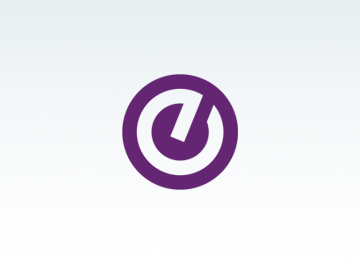Analytics in higher education: Everything you need to turn information into action

Higher education faces an unprecedented need for agility, and data-informed decision-making will be at its core. According to a survey conducted by the National Association of Student Personnel Administrators, 80% of institutions agree that they must continue to invest in student success analytics to stay competitive, but a staggering 67% fail to effectively use the data collected by their Student Information Systems (SIS). Unused data is lost potential. The role of analytics in higher education is to maximize the value of resources and stay ahead of constituent needs. The ability to create strategic plans, execute them efficiently, and analyze their results will differentiate institutions and proactively improve student outcomes.
If modern systems are the vehicles for success, data is the fuel. Applications in the cloud and SaaS help unify people, processes, and technology with a consistent and intentional foundation on which institutions can continuously grow. Wherever your future vision takes you, cloud and SaaS-powered software will get you there seamlessly.
Getting started with analytics
Analytics programs are complex and need to account for data from all internal IT systems, in addition to information from various external sources. All that data can be difficult to wrangle into coherent insights that directly impact departmental efficiency and student success. Often, we start by trying to solve for the tip of the iceberg by creating an analytic or report, but forget the bigger picture of setting up data-, reporting-, and analytics-at-scale.
Holistic data solutions are more than off-the-shelf tools. They’re institutional strategies that can transform processes on every level. Because of this, it is vital to set up the appropriate infrastructure, supporting data models, application programming interfaces (APIs), security and privacy considerations, and tools.
Breaking down data-related spending
With an estimated 74% of higher education schools facing financial challenges in 2021, most colleges and universities are looking to do more with less. Amid the uncertainty of the ongoing pandemic, optimizing existing technology and resources is crucial for achieving institutional goals and improving student outcomes under any circumstance.
To be successful, higher education needs to invest in data strategy, a tactic that allows institutions to understand business needs, define use cases, and build architecture to support a long-term vision.
McKinsey & Company describes four key areas to factor in when budgeting for data-related spending:
- Data sourcing: cost associated with procuring data from customers and third-party vendors
- Data architecture: cost associated with data infrastructure (procuring software and hardware) and data engineering (building and maintaining infrastructural approach)
- Data governance: cost of data-quality monitoring, remediation, and maintaining data-governance artifacts
- Data consumption: cost associated with data analysis and report generation (including spending data access and cleanup)
While the price of analytics programs may seem steep, an investment in IT modernization ultimately pays for itself by creating a sturdy foundation for both present and future success. Plus, when these initiatives work in harmony, they can reduce the operational costs of each individual component. Cloud-based solutions, for example, can provide the tools and infrastructure for processing vast amounts of high-quality data without increasing headcount or on-premises hardware, therefore making analytics-at-scale feasible for institutions of all sizes.
The importance of data governance
Data is sensitive, particularly in higher education, where students trust institutions to use their personal information responsibly. It is critical to foster a culture of data-driven decision-making, as well as a shared responsibility for governance to ensure appropriate access.
Simply put, data governance encompasses all systems used to manage data, including processes for assigning ownership to information, ensuring access for the right people, continuously vetting the quality, and enforcing its security. While these processes describe how institutions “govern” their data, the end goal is to use that data to better govern the institution, leveraging insights to drive efficiency and growth.
The International Data Corporation (IDC) found that only 18% of data professionals’ time is spent analyzing information and delivering valuable business outcomes. Instead, they spend 34% of their time preparing data, and 29% of their time protecting data. This is not only inefficient—it’s risky. When people can’t easily find the data they’re looking for, they’re prone to recreate it—or track it down from an unvetted source—ultimately propagating multiple versions of “the truth” and introducing liabilities.
Not all data sources are created equal. Knowing where your data is coming from builds confidence in your decision-making and helps streamline workflows. As you map your sources, ensure that the appropriate stakeholders have access to information they can trust.
In addition to choosing reliable data sources, it is equally important to document what type of data is being collected. Robust metadata will help maintain regulatory compliance with existing and upcoming data classification laws, while also beefing up protections for sensitive information. In this way, data governance works in tandem with cybersecurity to keep information safe and institutions running optimally.
It is important to protect information while still allowing it to move freely through the organization. The intent is not to hoard data, but to ensure that it is managed, governed, defined, and available to the masses. A democratized data governance strategy avoids risks inherent to moving data from one local machine to another by providing a reliable platform with security controls in place, including group- and role-based access.
Learn more about moving forward in data governance.
7 ways to optimize your higher education data strategy
We are living through a data deluge, and it’s only going to get worse. According to the IDC, around 64.2 zettabytes of data was created and replicated in 2020. For context, a single zettabyte is one billion terabytes or one trillion gigabytes. While 2020 was an unprecedented year, it’s indicative of where the digital landscape is heading. The IDC reports, “The revised model forecast that global data creation and replication will experience a compound annual growth rate (CAGR) of 23% over the 2020–2025 forecast period.”
As the volume, variety, and velocity of data increases exponentially, the analysis gap—the gap widens between information quantity and our ability to analyze it s, making it critical for forward-thinking institutions to understand all aspects of analytics programs, safeguard information, and continuously optimize their data strategy.
When optimized, a higher education data strategy extends the existing budget, supports value-added employee activity, and improves process efficiency at all levels of an organization. The following steps will ensure your analytics program is keeping your institution nimble.
1. Align leadership
To maximize the impact of analytics, strategy and leadership must be in sync. As you’re determining your data roadmap, start by establishing a set of North Star business priorities that directly link to your current technology, not the other way around. For most institutions, these Key Performance Indicators (KPIs) center on recruitment, retention, and student learning outcomes, but a robust analytics program can drive success in all areas, including advancement, finance, human resources, and procurement.
An investment from the top in solid data strategy is ultimately an investment in business continuity, not only supporting business priorities, but also system-wide cybersecurity. Data logging and acquisition capabilities facilitate fraud detection and forensic review, enabling you to quickly determine the cause of disruptive issues if they occur.
2. Double down on data governance
As the analysis gap widens, it will become impossible to meticulously govern every piece of data, making an effective data governance strategy key to information management that is efficient, accurate, and compliant with privacy regulations. In doing so, you’ll also foster an understanding of data and its lineage that will drive analytics efforts and maximize technology’s value at an institution.
Outdated approaches to governance fail to strike a balance necessary for optimization, either building a centralized Enterprise Data Warehouse (EDW) with monolithic solutions or foregoing an EDW for multiple distributed analytics systems. A more effective model for governance embraces data democratization, providing a centralized platform as a source of clean, trustworthy information. Decentralized units can then “plug in” to this shared service to access the information they need and manage data in an appropriate fashion.
3. Craft an actionable data and analytics strategy
Higher education needs actionable plans—both short- and long-term—to effectively analyze large volumes of data and use that information for strategic insight.
An effective data and analytics strategy can’t be seen as a one-size-fits-all approach enforced on an organization. It must be created and refined by engaging with the community, understanding their business needs, and continuously aligning analytics to meet them.
Design-thinking, persona-based strategy connects with users’ day-to-day experiences and treats analytics like a software company might treat a product development exercise. By supporting iterative analytic development, you can take stakeholder requirements and turn them into design sprints, meeting individual needs in a matter of weeks, not months.
4. Accelerate data platform work
To become future-ready, institutions need a continuously available, fault-tolerant data platform based on cloud infrastructure, enabling flexibility and supporting the success of future reporting, analytics, and artificial intelligence.
Legacy solutions address specific needs but create silos of information that decrease efficiency and compromise decision-making. More and more institutions are moving away from these disconnected systems and toward cloud-based platforms that unify data and support greater interoperability.
This can be especially beneficial in higher education, where the applicant-student-alumnus lifecycle rapidly transfers the constituent relationship from department to department.
5. Fuel the analytics talent ecosystem
Remember to enable people. The technology is important, but you’ll need technical skills to manage your programs successfully. By offering specialized training for employees, you can accelerate key pilot projects, which in turn help keep staff engaged and motivated.
That kind of community engagement is essential, creating a culture in which everyone can help manage data’s quality and use the information to solve real-world problems, such as targeting best-fit applicants or identifying current students in need of academic support. By fostering an organization-wide appreciation for analytics, you drive the effectiveness of data across departments.
6. Leverage fit-for purpose data models and tools
One way to accelerate your data strategy is to use templated data models and analytics tools to jump-start your adoption process at an affordable cost. With this approach, you can skip the time-consuming process of defining your own models, while greatly aiding governance efforts with metadata and traceable lineages for all elements already applied.
Look for higher education-centric models that meet common needs with additional flexibility to best serve your institutional goals.
7. Establish analytics DataOps
Data operations (DataOps) involves using agile principles, testing, automation, and measuring outcomes to ensure that valuable information is in the right hands at the right time and brings value to decision-makers more quickly. Data scientists and analysts then spend less time on repeatable, manual processes, and more time innovating.
Successful DataOps programs are made possible by solid governance and metadata. With this in place, you can automate continuous testing of your analytics pipeline to ensure all the data flowing through your institution is verified and trustworthy.
Accelerating the future
Accelerated by the recent digital transformation, data has rapidly become higher education’s most valuable tool for improving student outcomes. By investing in analytics—and the people, processes, and technology that power them—institutions make themselves future-proof, fueling innovation and data-informed solutions year after year.
Learn more about data management and analytics services.




